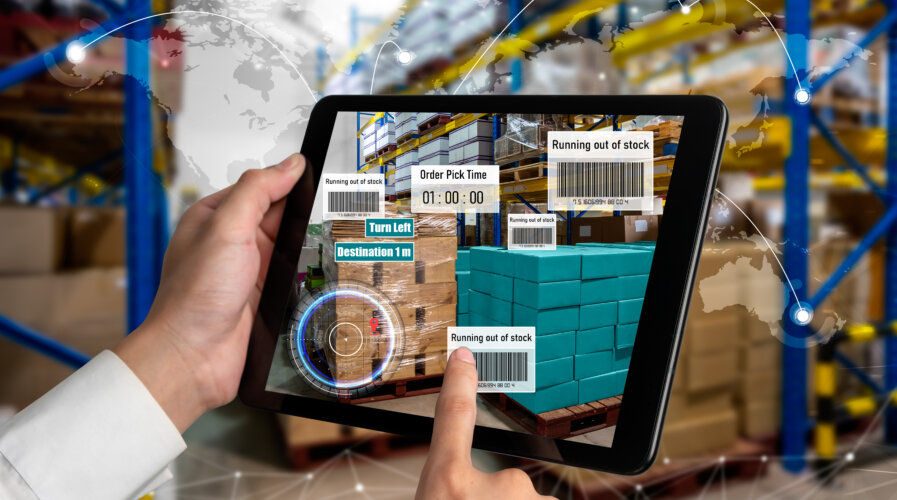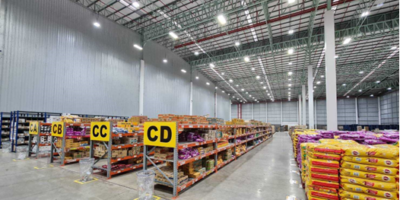
(Source – Shutterstock)
Disrupting warehouse management with passive IoT
Article by John Gao, President of 5.5G Domain, Huawei
As industries increasingly lean on new digital technologies to streamline operations, digital twins are being used by business to generate complete and dynamic overviews of their assets and their processes. The Internet of Things (IoT) is key to realizing this vision.
Following 80 years of development, RFID technology, which offers low cost and zero power consumption, is currently the most widely used technology in the retail and logistics industries that enables this. However, this technology application scenarios are limited. It is hampered by the very short distance it can transmit its signal, is relatively expansive to integrate and is not very advanced when it comes to automation.
By reducing costs and the need for labor, a passive IoT solution could make sensor networks far more economically viable. Passive IoT technologies could support two key IoT application scenarios and disrupt current logistics best practice and business operations.
Passive IoT technologies could make sensor networks far more economically viable, while dramatically increasing the efficiency of warehouse stocktaking and other industrial processes by tracking hundreds of thousands of items over a 200m2 area in real time.
Traditional sensors: costly and environmentally-unfriendly batteries
Traditional sensors require batteries, which are costly to maintain and replace, as well as being detrimental for the environment. Factories, mines, ports, and power plants want to connect large numbers of sensors to track the location and performance of their assets, but are looking for a solution that costs less than 10 U.S. cents and involves power consumption of just 100 uW per device.
The solution

John Gao, President of 5.5G Domain, Huawei
In the second quarter of 2022, Huawei and China Mobile conducted a field test of a passive IoT technology, which obtains energy from the surrounding environment. That means sensors can transmit data without batteries. The technology is designed to be deployed with 5.5G or 5G-Advanced networks, the next generation of 5G. As well as providing continuous regional coverage, 5G-Advanced networks can employ a simplified air interface to serve ultra-low-cost battery-free terminals.
In the manufacturing sector, passive IoT solutions could be used to greatly reduce the need for paper trails by enabling an automatic inventory system. A passive IoT solution could, for example, be used to count 100,000 stock items in a warehouse with an accuracy of 99.99%. Such a solution would save manpower and increase the efficiency of warehouse stocktaking.
The logistics of goods from the supplier to the factory usually goes through four steps: dock, floor, sorting area, and production line. Currently, a thermal paper needs to be pasted in each link, so that there is a lot of manual participation in the link, and the efficiency is low. Adopting a unique electronic code for goods will greatly reduce manual participation and achieve paper-less and automated turnover.
Business applications: energy, farming and manufacturing
In the automobile industry, a passive IoT network could track materials across the whole manufacturing process from the workshop to the warehouse, the repacking and sorting area, and the production line. Such tracking could be conducted every hour automatically.
Passive IoT solutions could also be used in the healthcare sector to monitor the temperature of medicines during cold chain transportation. Other potential wide-area applications include asset management and dangerous goods surveillance. Global top automotive manufacturers, home appliance manufacturers, and 3C manufacturers are actively promoting industry showcases to explore the maturity of passive IoT in supply chain logistics to achieve paperless strategies.
Similarly, in the animal husbandry sector, the technology could be used for remote automatic stocktaking and real-time temperature and movement monitoring of livestock. It would allow for battery-free sensors to be small and light enough to be worn comfortably by animals. That would help to accelerate the implementation of precision and smart agriculture. Monitoring animal body temperature and the movement of livestock can, for example, help to detect infections.
In the energy sector, the temperature, humidity and pressure of the power system are key data for predictive maintenance. In many scenarios, however, the collection terminal cannot use batteries because they are too flammable, but a passive IoT solution could be used to collect environmental information and the basic data required for predictive maintenance.
Power usage
The passive IoT solution consumes power of just 100 uW per device, which is 100 times lower than that of NB-IoT – a low power, wide area cellular technology used for IoT deployments. It can achieve a true ten-year life cycle with no maintenance issues such as replacing batteries. The cost is about 50 U.S. cents, which is 10~100 times lower than the cost of NB-IoT, and can be widely used in cost-sensitive industries. Passive IoT connectivity can also pinpoint the location of a device to within two to three meters, which is what enables the functions that will enable Industry 4.0 to accelerate.
The views in this article are of the author and may not reflect the views of Tech Wire Asia.
READ MORE
- The criticality of endpoint management in cybersecurity and operations
- Ethical AI: The renewed importance of safeguarding data and customer privacy in Generative AI applications
- How Japan balances AI-driven opportunities with cybersecurity needs
- Deploying SASE: Benchmarking your approach
- Insurance everywhere all at once: the digital transformation of the APAC insurance industry


